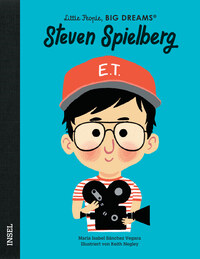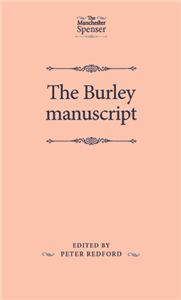Your Search Results
-
Sternwiese Verlag
Play yourself happy! The educational-therapeutic games and materials of our Sternwiese-Verlag enable individual access to the child's emotions and thoughts. With help of exciting strategies, unique concepts and personable characters will be developing and strengthening of social and emotional skills varied support.
View Rights Portal
-
Promoted ContentMusicDecember 2016
Partners in suspense
Critical essays on Bernard Herrmann and Alfred Hitchcock
by Edited by Steven Rawle, Kevin J. Donnelly
This volume of new, spellbinding essays explores the tense relationship between Alfred Hitchcock and Bernard Herrmann, featuring new perspectives on their collaboration. Featuring essays by leading scholars of Hitchcock's work, including Richard Allen, Charles Barr, Murray Pomerance, Sidney Gottlieb and Jack Sullivan, the collection examines the working relationship between the pair and the contribution that Herrmann's work brings to Hitchcock's idiom. Examining key works, including The Man Who Knew Too Much, Psycho, Marnie and Vertigo, the essays explore approaches to sound, music, collaborative authorship and the distinctive contribution that Herrmann's work with Hitchcock brought to this body of films, examining the significance, meanings, histories and enduring legacies of one of film history's most important partnerships. By engaging with the collaborative work of Hitchcock and Herrmann, the book explores the ways in which film directors and composers collaborate, how this collaboration is experienced in the film text, and the ways in which such partnerships inspire later work.
-
Promoted Content
-
 Trusted Partner
November 2021
Trusted Partner
November 2021Poster Clemens J. Setz (A1)
plano, nicht gefaltet | Für Fans der Setz’schen Werke und seiner Person
by Clemens J. Setz
»Wer den Chor der Mäuse nicht hört, braucht nicht mit mir befreundet zu sein.« Clemens J. Setz ist der Autor bahnbrechender Romane wie Die Stunde zwischen Frau und Gitarre, aufregender Erzählungsbände wie Der Trost runder Dinge, von Gedichten, Theaterstücken, Drehbüchern, Nacherzählungen und Essays. Er ist Übersetzer, ein Freund der Plansprachen, des Obertongesanges, der Ziegen und der Hasen. Er ist Träger des Georg-Büchner-Preises, des Kleist-Preises, des Berliner Literaturpreises. Außerdem ist er ein Poet der Kurznachrichtendienste und noch einiges mehr. In seiner radikalen Vielfältigkeit und vielfältigen Radikalität ist er eine herausragende Figur der Gegenwartsliteratur. Für Fans der Setz’schen Werke und seiner Person ist dieses hochwertige Plakat mit einem Porträt des Dichters gedacht, aufgenommen vom Berliner Fotografen Max Zerrahn. Poster auf stabilem GalaxyArt-Papier im DIN-A1-Format
-
 Trusted Partner
March 2010
Trusted Partner
March 2010Onkel J.
Heimatkunde
by Andreas Maier
Seit seinem Debüterfolg mit dem Roman Wäldchestag im Jahr 2000 ist Andreas Maier häufig unterwegs, um aus seinen Romanen zu lesen. Nur daß er in den letzten ein, zwei Jahren meist, wenn er eingeladen war, auch immer wieder schon aus dem kommenden Onkel J. las. Jedesmal hatte er damit das Publikum im Handumdrehen auf seiner Seite. Umstandslos fand man sich angeschlossen an Maiers Welt aus Wetterau, Familie, Fußball, Apfelwein, aus Thomas Bernhard und dem Evangelium nach Matthäus, aus Ängsten, Kneipenfreuden und -nöten, eingepackt in absurde Vorkommnisse und komische Erlebnisse. Jede Kolumne beginnt mit einem »Neulich«-Satz, die erste so: »Neulich war ich in Berlin. Das wird jetzt niemand weiter ungewöhnlich finden, aber ich bin Hesse, und mir ging in Berlin ein Wunsch in Erfüllung.« Dennoch handelt es sich um alles andere als ein Kolumnenbuch. Vielmehr nimmt Onkel J. – im Übergang von den ersten vier Romanen zu Maiers Projekt »Ortsumgehung« – eine zentrale Stelle ein. »Alles gehört zusammen, und für alles ist das Kolumnenbuch der Kern.«
-
 Trusted Partner
Trusted Partner
-
 Trusted Partner
Film theory & criticismFebruary 2014
Trusted Partner
Film theory & criticismFebruary 2014The Encyclopedia of British Film
Fourth edition
by Edited by Brian McFarlane
With well over 6,300 articles, including over 500 new entries, this fourth edition of The Encyclopedia of British Film is a fully updated invaluable reference guide to the British film industry. It is the most authoritative volume yet, stretching from the inception of the industry to the present day, with detailed listings of the producers, directors, actors and studios behind a century or so of great British cinema. Brian McFarlane's meticulously researched guide is the definitive companion for anyone interested in the world of film. Previous editions have sold many thousands of copies and this fourth edition will be an essential work of reference for enthusiasts interested in the history of British cinema, and for universities and libraries.
-
 Trusted Partner
March 1964
Trusted Partner
March 1964In der Sache J. Robert Oppenheimer
Ein szenischer Bericht
by Heinar Kipphardt
Eine historische Begebenheit liegt diesem szenischen Bericht zu Grunde: der Fall Oppenheimer. Am 12. April 1954 begann in Washington die Untersuchung gegen den Physiker und langjährigen Leiter der amerikanischen Atomforschung J. Robert Oppenheimer. Der Untersuchungsausschuß, von der Atomenergiekommission der USA eingesetzt, sollte prüfen, ob sich der Wissenschaftler der Regierung seines Landes gegenüber loyal verhalten habe. Das drei Wochen währende Verhör, Beispiel und Ausdruck des Konflikts zwischen Individuum und Gesellschaft, Wissenschaft und Staat, zählt zu den denkwürdigen Ereignissen der Zeitgeschichte.
-
 Trusted Partner
April 2026
Trusted Partner
April 2026Little People, Big Dreams – Steven Spielberg
Deutsche Ausgabe
by María Isabel Sánchez Vegara, Keith Negley, Svenja Becker
Steven war sechs Jahre alt, als seine Eltern ihn zum ersten Mal mit ins Kino nahmen. The Greatest Show on Earth hieß der Film und Steven war so beeindruckt, dass sich fortan bei ihm alles ums Kino drehte. Sein erster Film, mit elf, zeigt die Kollision zweier Züge seiner Spielzeugeisenbahn. Mit 14 spannte er Nachbarskinder und Schulfreunde für einen Film ein, mit dem er den ersten Preis bei einem Amateur-Festival gewann. Es war der Beginn einer großen Karriere: Der weiße Hai, Jurassic Park, Schindlers Liste, Indiana Jones – seine Filme sind legendär, und Steven Spielberg wurde zu einem der erfolgreichsten Regisseure weltweit. Little People, Big Dreams erzählt von den beeindruckenden Lebensgeschichten großer Menschen: Jede dieser Persönlichkeiten, ob Philosophin, Forscherin oder Sportler, hat Unvorstellbares erreicht. Dabei begann alles, als sie noch klein waren: mit großen Träumen. Empfohlen ab 4 Jahren
-
 Trusted Partner
Trusted Partner
-
 Trusted Partner
Literature: history & criticismNovember 2016
Trusted Partner
Literature: history & criticismNovember 2016The Burley manuscript
by Edited by Peter Redford. Series edited by J. B. Lethbridge
England and the 1966 World Cup presents a cultural analysis of what is considered a key 'moment of modernity' in the nation's post-war history. Regarded as having an importance beyond its primary sporting purpose, the World Cup in England is examined within the complexity of the cultural, social and political changes that characterised the mid-1960s. Yet, although addressing the importance of non-sport related connections, the book maintains a focus on football, discussing it as a 'cultural form' and presenting an original perspective on the aesthetic accomplishment in football tactics by England's manager, Alf Ramsey. The study considers the World Cup in relation to the cup tradition, England as the World Cup host nation, the England squad and masculinity, the modernism of England's manager Alf Ramsey, design and commercial aspects of the World Cup, a critical engagement within existing academic accounts, and an examination of how England's victory has been remembered and commemorated.
-
 Trusted Partner
March 2024
Trusted Partner
March 2024Papa ist der Größte
by Michelle Robinson, Paddy Donnelly, Susanne Weber
Du kannst das! Ein dinostarkes Bilderbuch zum Über-sich-Hinauswachsen – mit einer Liebeserklärung an alle Papas. Der kleine Dino ist sehr stolz auf seinen Papa. Denn Papa ist so groß und stark! Ob der kleine Dino wohl auch mal so groß werden wird? Na klar! Papa beschützt und bestärkt sein Kind. Und er verrät ihm, dass auch große Papas mal klein und unsicher waren. So begegnet der kleine Dino seinem ersten Abenteuer mit Mut im Herzen und Papas Stimme im Ohr: „Du kannst das! Ich weiß es.“ Weil wir alle mal klein waren: Eine liebevolle Dinogeschichte für alle Papas und ihre mutigen Kinder. Papa ist der Größte – ein süßes Kinderbuch für alle großen und kleinen Dino-Fans. „Papa ist der Größte“ ist ein herzliches Dino-Buch mit einer liebenswerten Papa-Sohn-Geschichte, die Mut macht und zum Über-sich-Hinauswachsen anregt. Für all die großen und kleinen Dino-Fans da draußen: Ein zauberhaftes Bilderbuch mit gereimten Text. Das Dinosaurier-Bilderbuch ist wunderbar ausdrucksstark und zuckersüß illustriert von Paddy Donnelly. „Papa ist der Größte“ ist nicht nur für 3-Jährige geeignet, sondern auch eine wunderschöne Geschenkidee für Väter. „Papa ist der Größte“ ist ein buntes Bilderbuch für alle Dino-Fans da draußen – besonders die eher ängstlichen. Es ist ein süßes Mutmachbuch für die Kleinen und gleichzeitig eine Liebeserklärung an alle Väter da draußen. Es ist das perfekte Geschenk für Kinder ab 3 Jahren oder für den Papa zum Vatertag.
-
 Trusted Partner
Literature & Literary StudiesJanuary 2004
Trusted Partner
Literature & Literary StudiesJanuary 2004Steven Berkoff and the theatre of self-performance
by Robert Cross
This book is the first substantial study of Steven Berkoff's career, examining the construction and projection of his notorious public persona through his plays and writings. ;
-
 Trusted Partner
Trusted Partner
-
 Trusted Partner
Revolutionary groups & movementsNovember 2015
Trusted Partner
Revolutionary groups & movementsNovember 2015The 1989 Revolutions in Central and Eastern Europe
by Edited by Kevin McDermott and Matthew Stibbe
-
 Trusted Partner
Humanities & Social SciencesSeptember 2012
Trusted Partner
Humanities & Social SciencesSeptember 2012Stalinist Terror in Eastern Europe
by Edited by Kevin McDermott and Matthew Stibbe
-
 Trusted Partner
Literature: history & criticismSeptember 2016
Trusted Partner
Literature: history & criticismSeptember 2016Spenserian allegory and Elizabethan biblical exegesis
A context for The Faerie Queene
by Series edited by J. B. Lethbridge, Margaret Christian
Edmund Spenser famously conceded to his friend Walter Raleigh that his method in The Faerie Queene 'will seeme displeasaunt' to those who would 'rather have good discipline delivered plainly in way of precepts, or sermoned at large'. Spenser's allegory and Elizabethan biblical exegesis is the first book-length study to clarify Spenser's comparison by introducing readers to the biblical typologies of contemporary sermons and liturgies. The result demonstrates that 'precepts ... sermoned at large' from lecterns and pulpits were themselves often 'clowdily enwrapped in allegoricall devises'. In effect, routine churchgoing prepared Spenser's first readers to enjoy and interpret The Faerie Queene. A wealth of relevant quotations invites readers to adopt an Elizabethan mindset and encounter the poem afresh. The 'chronicle history' cantos, Florimell's adventures, the Souldan episode, Mercilla's judgment on Duessa and even the two stanzas that close the Mutabilitie fragment, all come into sharper focus when juxtaposed with contemporary religious rhetoric.
-
 Trusted Partner
Trusted Partner
-
 Trusted Partner
Trusted Partner
-
 Trusted Partner
SociologyJanuary 2013
Trusted Partner
SociologyJanuary 2013Human agents and social structures
by Edited by Peter J. Martin and Alex Denis
-
 Trusted Partner
Humanities & Social SciencesJanuary 2025
Trusted Partner
Humanities & Social SciencesJanuary 2025The four dimensions of power
Understanding domination, empowerment and democracy
by Mark Haugaard
In this accessible and sophisticated exploration of the nature and workings of social and political power, Haugaard examines the interrelation between domination and empowerment. Building upon the perspectives of Steven Lukes, Michel Foucault, Amy Allen, Hannah Arendt, Anthony Giddens, Pierre Bourdieu and others, he offers a clear theoretical framework, delineating power in four interrelated dimensions. The first and second dimensions of power entail two different types of social conflict. The third dimension concerns tacit knowledge, uses of truth and reification. Drawing upon genealogical theory and accounts of slavery as social death, the fourth dimension of power concerns the power to create social subjects. The book concludes with an original normative pragmatist power-based account of democracy. Offering lucid and entertaining illustrations of complex theoretical perspectives, this book is essential reading for scholars and activists.




























